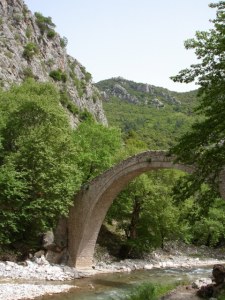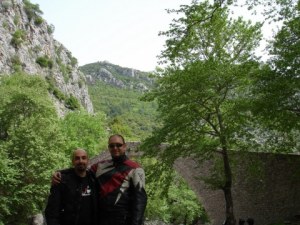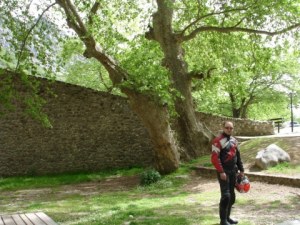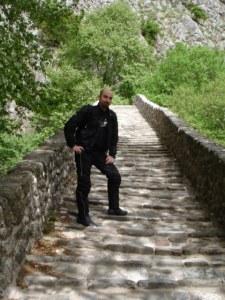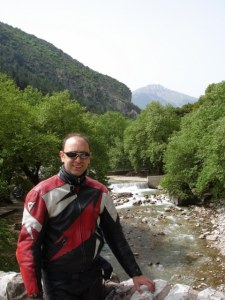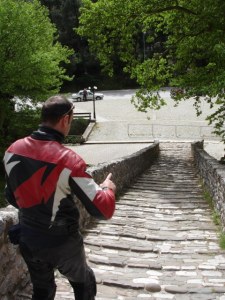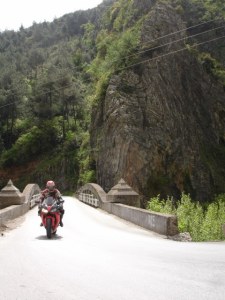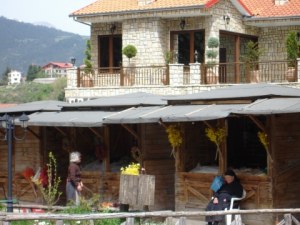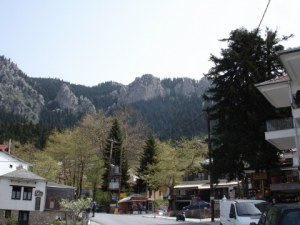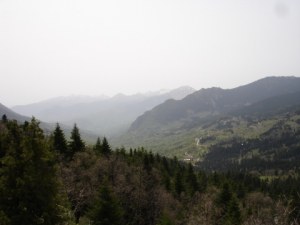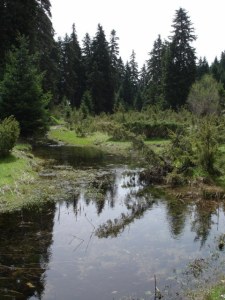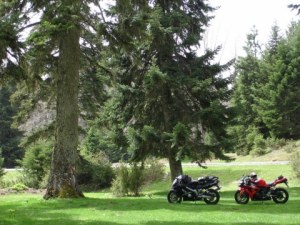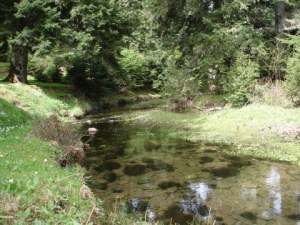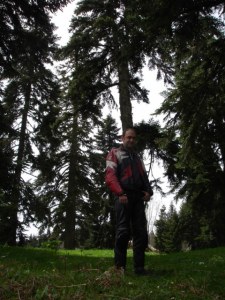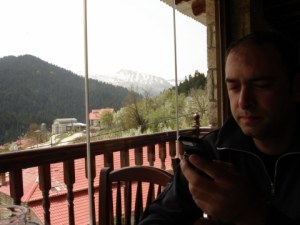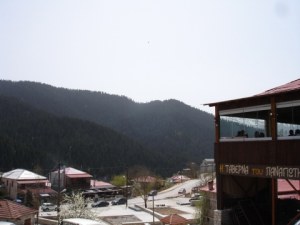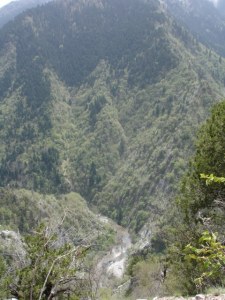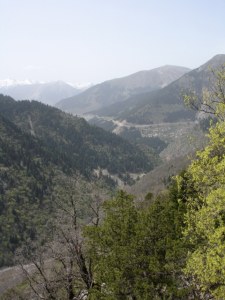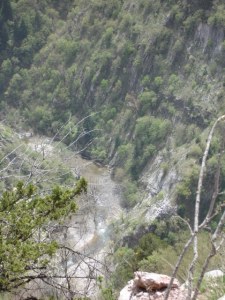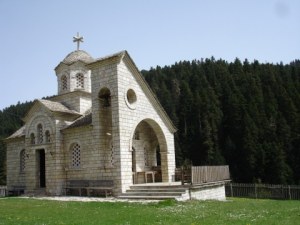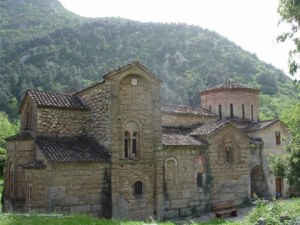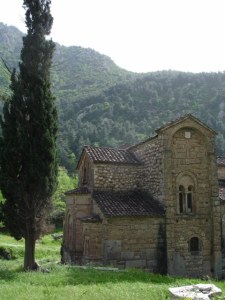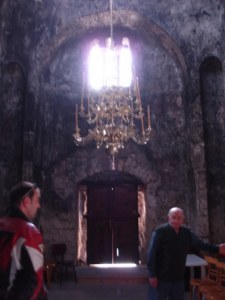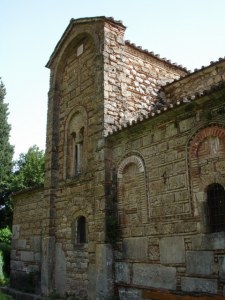The weather was showing us its best moods, so I knew that this weekend was a chance for a trip. So, in brief moves, the proposal was made for the Friday night staying in Lamia and on Saturday morning, excursion to Trikala Highlands. I managed to go to Lamia on Friday night, departing right after my work.
Saturday morning, around 9:30, Sakis came. We sit for a half-an-hour morning coffee and filled with appetite for the journey, we departed for Trikala. The first thing that woke us up for good, except from the coffe, was the magnificent and playful route of Domokos, while the temperature was at the best levels for the season. The traffic was very low, so it was really very easy for us to travel. Descending from Domokos, we continued through the big straight roads until we end up to Kardista. Turning right outside of Karditsa for Trikala, we continued for approximately 35 more kilometers. A thing worth to mention is that through our route from Domokos till Trikala, construction companies were doing (or finishing up) widening of the road, obviously due to hazardous levels of the roads (many junctions, lots of tractors coming out of the fields very suddenly etc.) Reaching almost outside Trikala, there is a sign on the left that shows ‘Pyli’.
From there, after approximately 18 kilometers, we reach the graphic large village of Pyli (Gate), where we discover why it took such a name: It’s being built on the foot of Pindos and specifically on the crossing between Thessalia and Epirus prefectures. The two mountains that stand right behind the village are Koziakas and Itanos, while they are being separated by Portaikos river. A few hundreds of meters outside Pyli, heading for Pertouli/Elati, we stopped to see and photograph the imposing stone-build bridge of Pyli, soaring 13 meters up, which connects the two facing mountains.
Continuing from there, the altimeters starts to climb steady, until 13 kilometers full of curves, we end up to the magnificent village of Elati, a village which is being built on 900 meters altitude, surrounded by thick greenery. It’s being considered the biggest of all the highland villages of the prefecture and from what we’ve discovered, it’s the most tourist developed one. During winter season, lots of people gather there, since the skiing center of Pertouli is located only 7 kilometers far, while during the summer season, the place is a good starting point for hiking and climbing.
Since time was already 12:30, we decided to head to Pertouli. The route between Elati – Pertouli is marvelous, while reminding a lot Austrian Alps scenery, since the road is in between green fields full of fir-trees, at an altitude of 1000 meters! A few kilometers later, we entered the village of Pertouli, where the most characteristic spot is the beautiful stone-built church of Ag.Kyriaki, on our left hand. We decided to stop and eat at Pertouli, specifically at the very beautiful taverna of Panagiotis, which is located at a high spot, where you can enjoy the fir-trees sightseeing. Except from the tasteful food, the service at that specific tavern was something more than outstanding, along with reasonable prices, making us to have the best impressions!
Around 2:00 pm we decided to drive a little bit more kilometers down the road, until we visit the stone monastery of ag. Paraskevi, which is located at the edge of a road turn, viewing the valley of Pertouliotis river. Unfortunately, due to reconstruction works, the monastery was closed, so we ended up with only a few photos from the place.
Return to Elati for our noon coffee and rest break. Around 4:00pm we started heading back to Pyli, in order to visit a church named Porta Panagia, since Sakis had read something relative.
Reaching the village of Pyli again, there was a sign for that specific church, which is located just a couple of hundreds of meters away. The church is considered one of the oldest churches in the surrounding area. It’s being built around 1283, while you can distinguish the Byzantine style. There are rumors also that this church was being built on the ruins of the ancient temple of Goddess Athena. The biggest features of this church are the two mosaic –full body pictures- of Jesus Christ and Virgin Mary that it hosts. By the time we reached the church, we were lucky enough to locate the very kind and helpful guard of the church, where he opened the church for us, while narrating in short, the history of the church.
Time was already 5:30pm so we decided to head back to Lamia, before night gets us en route. This specific trip hides many more destinations and landmarks which we unfortunately didn’t have the chance to visit, mainly due to time limitations, but we are sure that eventually, in the near future, we’ll have the chance to visit again.


